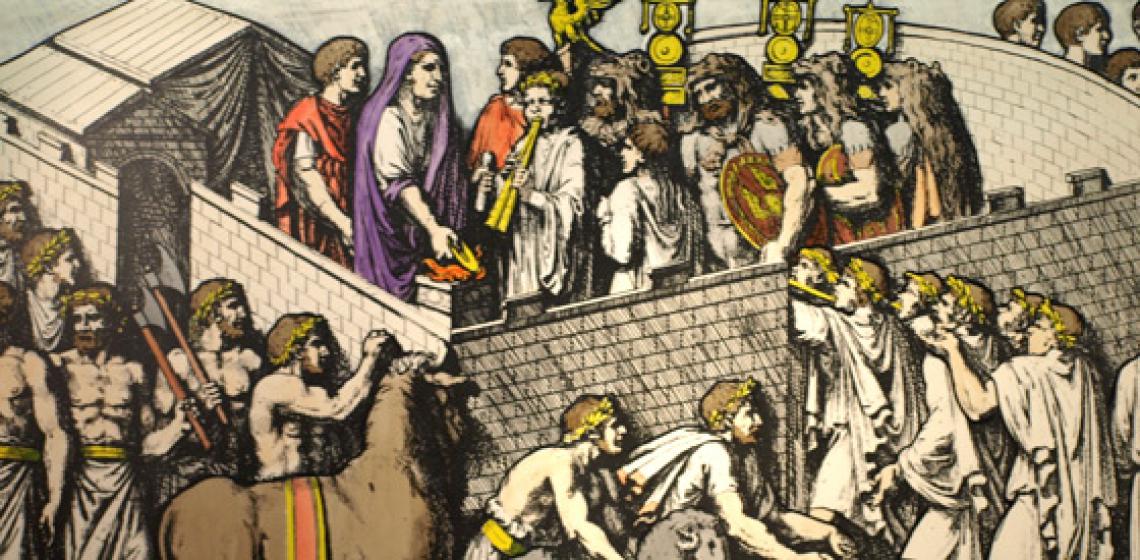Lunt Roman Fort (UK)

After the Iceni of East Anglia led by the legendary Boudica have rebelled against Roman rule and lost in AD 60, the Romans built a series of forts across the Midlands, including the Lunt. This turf & timber fort is now partly reconstructed.
The fort sits on a high plateau with a steep wooded slope overlooking the river Sowe. Based on the number of barrack blocks, it has been estimated that approximately 480 foot soldiers and 120 cavalry soldiers resided at the fort. Four years after construction, it was already downsized. It was finally abandoned around AD80.
The archaeological remains of the fort were known since 1930 but systematic excavation waited until 1960, when the appearance of a defensive ditch led the local authorities to carry out further archaeological enquiries.
In 1966, an experimental rampart and ditch section were built. Between seven and ten prisoners from HMP Leicester worked for six hours per day over a twenty day period. It was estimated from this experiment that to build the whole circuit of ramparts around the fort it would require 138,000 turf blocks and a labour force of 210-300 men working 10 hours per day for 9-12 days. Such ramparts could have a long life, as shown by the life time of this reconstruction.
In 1970, The Royal Engineers reconstructed the Porta Principalis Sinistra (eastern gate). The design was based on examples from Trajan's Column in Rome and was consistent with the archaeological evidence for a double gate with no guard chambers. It was discovered from this experiment that it would take 10 men using a single pole with pulleys and guidelines to easily haul the individual sections into place. The gateway took three days to reconstruct.
In 1973, the Royal Engineers one of the granaries using substantial donations from The Observer newspaper and Lord Iliffe, the owner of the Coventry Evening Telegraph. Granaries not only housed the grain for the troops, but also stored valuable equipment. The granary was reconstructed in elm, mainly as a result of the felling of a number of elm trees due to Dutch Elm Disease, though there was evidence of elm timber found on the site. It took 18 men from 31 Base Workshop Squadron 10 days to build the structure using prefabricated timber.
The museum was opened by the Right Honourable Lord Iliffe of Yattendon (Bart.) on 18th June 1974.
In 1977, the gyrus was reconstructed. This was a ring of over 34 metres in diameter, probably used as an area for cavalry training. The surface of the arena was kept smooth and level and was covered in sand. 18 men from 31 Base Squadron working 6 hours a day took 10 days to complete it.
